Possible Post-War Transformations in Iran’s Domestic Landscape
The outcomes of the recent war indicate a decline in the image of the Iranian regime due to strategic setbacks and the risks posed by internal unrest. This may lead to a transformation in the structure of the regime, opening the door to potential shifts and various scenarios. These could include political paralysis resulting from an impasse between reformists and hardliners or a temporary agreement to manage the crisis. More dramatic possibilities also exist, such as the escalation of separatist unrest in minority regions, posing unprecedented challenges that may be difficult to overcome without fundamental solutions.
by STRATEGIECS Team
- Release Date – Jun 29, 2025
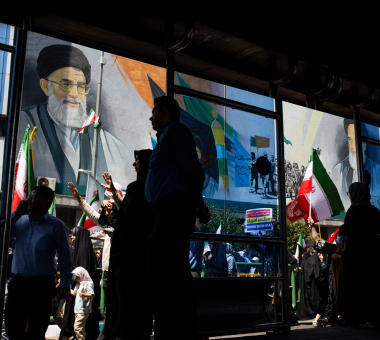
Since the outbreak of the war in Gaza on October 7, 2023, until the announcement of the ceasefire between Iran and Israel on June 24, 2025, Iran has faced a series of complex internal and external shifts. The war has had profoundly affected Iran’s military capabilities and the defensive doctrine it has followed since the end of the Iran-Iraq War in the late 1980s. Moreover, the war cast its shadow over the religious and revolutionary discourse that serves as the foundational pillar of the regime. These developments suggest a significant impact on the structure of the regime and its domestic and foreign policies, potentially leading to a reshaping of the balance of power within both the Iranian political system and society.
Pillars of the Iranian Political System
Since the 1979 revolution, the Iranian regime has worked to fortify its political structure against both internal and external threats, ensuring its continuity across decades and under some of the most challenging circumstances. This resilience was particularly evident during the protracted war with Iraq (1980–1988), which erupted when the political system was still in its infancy, barely a year after the revolution. The regime later adapted to geopolitical and strategic shifts, including the emergence of a unipolar world order led by the United States, and withstood U.S. pressures and sanctions both before the 2015 nuclear deal and after Washington’s withdrawal from it in 2018. It also endured the aftermath of the 2003 U.S. invasion of Iraq and the waves of unrest sparked by the Arab Spring.
In fact, Iran often managed to capitalize on the lessons and opportunities presented by these crises. Following the war with Iraq, it developed an advanced defensive doctrine that later expanded during the Arab Spring into what became known as the “Axis of Resistance.” This strategy benefited from the American invasion of Iraq and the emergence of fragile states plagued by internal conflict, eventually evolving into what is now referred to as the “Unification of the Arenas” strategy.
Domestically, the regime consolidated its grip on power and society, strengthening the roles and tools of conservatives and hardliners at the expense of reformists. The latter saw their influence confined largely to elected offices, while real decision-making power remained concentrated in unelected institutions such as the Supreme Leader’s office, the Islamic Revolutionary Guard Corps (IRGC), the Supreme National Security Council, and the Guardian Council.
The survival strategy of the Iranian regime rests on four interrelated pillars that together form the overarching framework guiding its domestic and foreign policies:
- the doctrine of “forward defense,”
- internal security policy,
- military capabilities, particularly its missile arsenal and nuclear program,
- and an ideological background based on religious and revolutionary doctrine.
These four dimensions operate within a tightly interwoven structural context that make it difficult to separate the regime’s political ideology from its military behavior and diplomatic performance, as each element organically embodies the others.
The regime has constitutionally entrenched these pillars by embedding its revolutionary and religious doctrine into the structure of the state and its governing institutions. This laid the groundwork for expanding the role of the military establishment in foreign policy, particularly after 2003. This expansion was reflected in the integration of regional conflict arenas into its broader strategy for confronting the United States and Israel, alongside an intensified investment in missile and nuclear capabilities.
Domestically, the regime pursued a securitization path, assigning key responsibilities to security institutions—most notably the Basij forces (Organization for Mobilization of the Oppressed)—to suppress protest movements and contain attempts at rebellion or a coup. The cohesion among these four pillars has enabled the regime to absorb external shocks and confrontations while also mitigating the impact of internal tensions, including recurrent public unrest ranging from street protests to limited acts of violence.
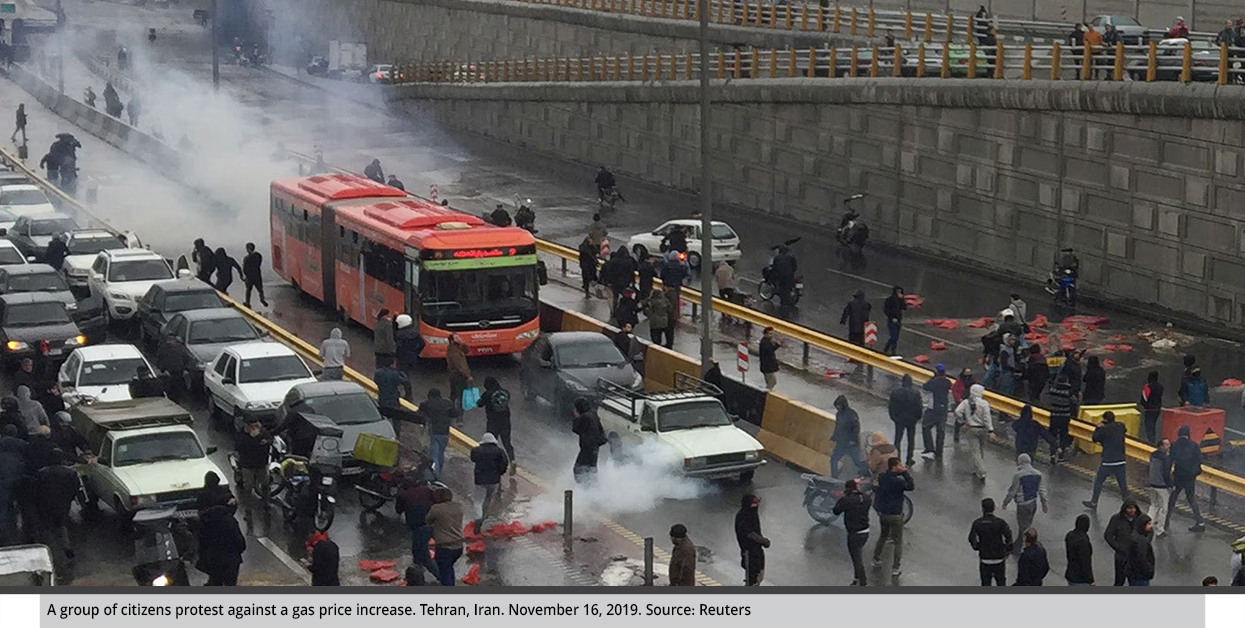
Cracks in the Pillars and Emerging Breaches
The war in Gaza and its subsequent developments—culminating in the direct confrontation with Israel on June 13, 2025—have led to a gradual fracturing of the foundational pillars of the Iranian political system, particularly in the forward defense doctrine, missile capabilities and the nuclear program, and an ideological authority rooted in revolutionary mobilization against the United States and Israel.
From the perspective of the forward defense doctrine, which relies on Tehran’s support and armament of a vast network of military proxies, the war inflicted severe blows. These manifested in the diminished effectiveness and influence of its regional arms—most notably Hezbollah, Iran’s most critical proxy, which appears to have exited—either functionally or practically—the equation of Unification of the Arenas no longer plays the central role it once did. In a related development, Iran lost one of its key strategic arenas: Syria, which had served as a vital logistical corridor for supporting Hezbollah and encircling Israel. This shift followed changes on the ground after the fall of the Syrian regime and the rise of local forces hostile to Iran. Concurrently, a series of precision strikes targeted senior commanders of the IRGC’s Quds Force, particularly those involved in managing operations in Syria and Lebanon. In light of these developments, the war spilled into Iranian territory, marking a broad collapse of the forward defense concept. Tehran’s capacity to manage the war against Israel appeared limited, and its ability to take the initiative was clearly constrained.
On a broader scale, the objectives of Iran’s strategy extended beyond forward or advanced defense and operational deterrence against its adversaries, chief among them Israel. They also aimed to establish Iran as a dominant regional power, one that successfully gained influence and control in four Arab countries—Iraq, Lebanon, Syria, and Yemen—and projected power across its regional environment through multifaceted, hybrid forms of political and military coercion. However, as the foundations of this strategy eroded, beginning with the fallout of the Gaza war and even before the direct confrontation with Israel, Iran began to experience a rapid decline in its regional role, a weakening of its instruments of influence, and a retreat back within its borders.
As for Iran’s missile and nuclear programs—developed as expressions of national pride and symbols of sovereignty—both are theoretically integrated to serve two primary goals: acting as a strategic deterrent and laying the groundwork for the potential use of missiles as delivery systems for nuclear warheads, when and if such weapons were developed. However, the war in Gaza and the limitations of Iran’s deterrent capabilities—particularly its proxy network, which Tehran had long showcased as a tool of leverage during military escalations or as a bargaining chip—forced Iran to face the recent confrontation with Israel in an almost unilateral manner.
In doing so, it relied primarily on its ballistic missile arsenal, which ultimately failed to deter Israel from continuing its strikes deep into Iranian territory. Despite the material and psychological effects that Iran’s missiles had on Israel, the erosion of Iran’s deterrent tools allowed Israel to shift from covert operations targeting Iran’s nuclear infrastructure and human resources to direct and overt strikes. In the early days of the conflict, these attacks targeted prominent nuclear scientists and sensitive research facilities related to Iran’s nuclear program.
Eventually, the United States also joined the effort, striking key nuclear sites in Natanz, Isfahan, and Fordow. According to conflicting assessments from Washington and Tehran, these strikes resulted in either partial or complete destruction of Iran’s nuclear infrastructure. Either way, the U.S. strikes caused a major setback in Iran’s fortification capabilities and were a significant blow to the strategic viability of its remaining nuclear facilities.
On a broader level, Iran’s nuclear program was not merely a technical project; it constituted both an external deterrence strategy and a source of internal legitimacy for the Iranian regime. It served as a political tool capable of positioning Iran on the global stage, especially after its regional influence—once maintained through its network of proxies—began to wane. With the decline of this program, Iran has effectively lost its last strategic card capable of providing it with a balance against regional and major powers.
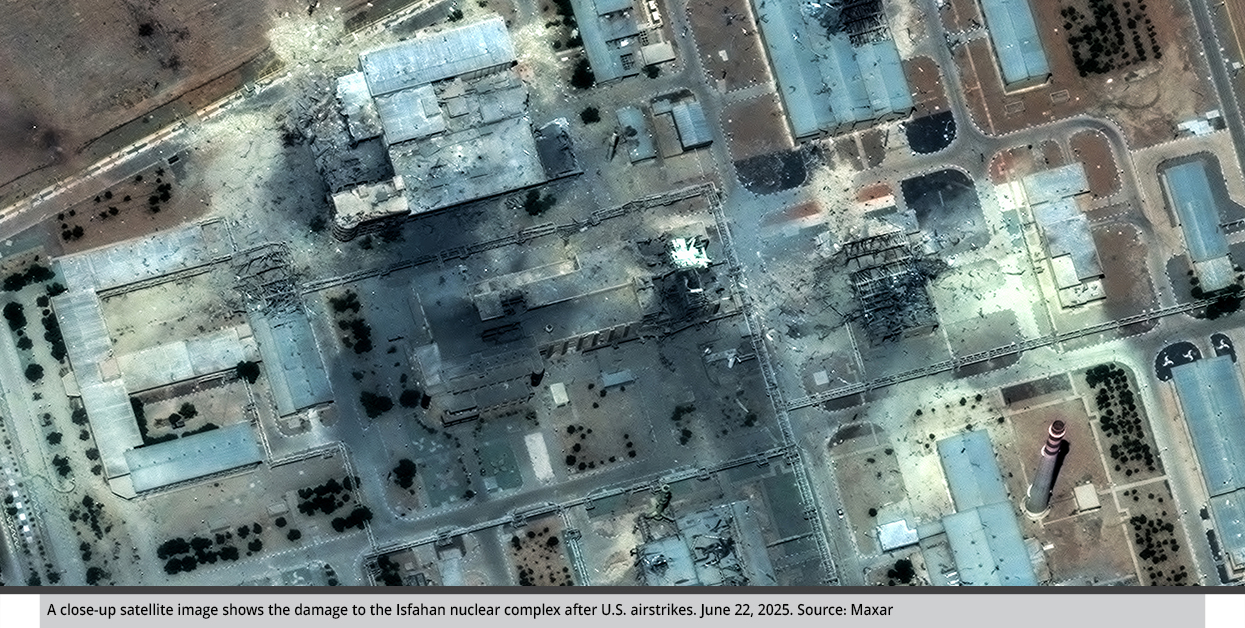
Regarding the regime’s ideological and revolutionary discourse, the war since October 7 marked a critical test for the Iranian doctrinal model, which has been based on three pillars: supporting the resistance forces, hostility toward the United States and Israel, and exporting the revolution beyond borders. However, recent developments have revealed the practical fragility of this discourse.
On one hand, Iran abandoned its proxy armed Shiite forces, most notably Hezbollah, in Iraq, Syria, Lebanon, and Yemen, leaving Iran to face its fate alone. Tehran adopted a cautious defensive stance, even urging Hezbollah to avoid escalation and accept the ceasefire reached on November 27, 2024. This led to the disintegration of the Unification of Arena model embodied by the Axis of Resistance, a direct result of military defeat and the absence of direct support and intervention from Tehran’s decision-making center.
On the other hand, the war exposed a deep contradiction between the regime’s hostile rhetoric toward the United States and Israel and its actual willingness to make concessions, initially aimed at easing sanctions to gain economic benefits and ultimately to preserve the political system itself, especially after U.S. strikes on its nuclear facilities. This gap between revolutionary discourse and pragmatic practice undermines the regime’s internal credibility and legitimacy, as evidenced by its failure to mount an effective response to Israeli attacks or even to adequately defend its sovereign sites and programs.
Moreover, the revolutionary rhetoric faces inherent opposition within Iran’s own political structure and factions. There is a deep divide between those who cling to the revolutionary discourse and reformist trends that view it as an ideological stance threatening the state’s cohesion and national priorities. Additionally, a broad segment of society—particularly the youth and the educated class—perceives this discourse as obstructive to progress and modernization, a sentiment expressed in numerous protests and demonstrations on Iranian streets.
Due to the war, doubts have likely increased within the regime’s social base, specifically regarding its ability to sustain the revolutionary resistance approach amid the disappointments suffered both directly and indirectly from the conflict. This is notably reflected in the official media coverage of the war, which appeared detached from reality, presenting virtual successes seemingly tailored to maintain support among that popular base.
Iran After the Ceasefire
Experiences in Middle Eastern countries in particular, and in non-democratic states more broadly, indicate that changes occurring within their internal structures, foreign policies, or official discourse tend to reflect—directly or indirectly—on the cohesion of the regime and the relationship between the state and society. These effects can lead to fundamental transformations in their form of governance, political unrest, or a profound reassessments of the political and ideological structure of the system.
In the case of Iran—having lost three out of its four foundational pillars, along with the IRGC’s significant internal and external capabilities—this opens the door to a deep shift in the regime’s equation, presenting it with multiple possible outcomes. These range from partial adaptation to the potential for structural change or political transition. In general, a set of possibilities can be outlined, some of which may lead to others in sequence.
The Iranian political system is likely to face two main possibilities. The first involves a deep reassessment that could push the system toward reformist discourse, potentially accompanied by the rise of reformists to key positions of power and a decline in the influence of the conservative and hardline factions. The second possibility involves conservatives—led by Supreme Leader Ali Khamenei—maintaining the dominance of hardliners over the government, which would drive the system to increasingly rely on its remaining pillar: hard power.
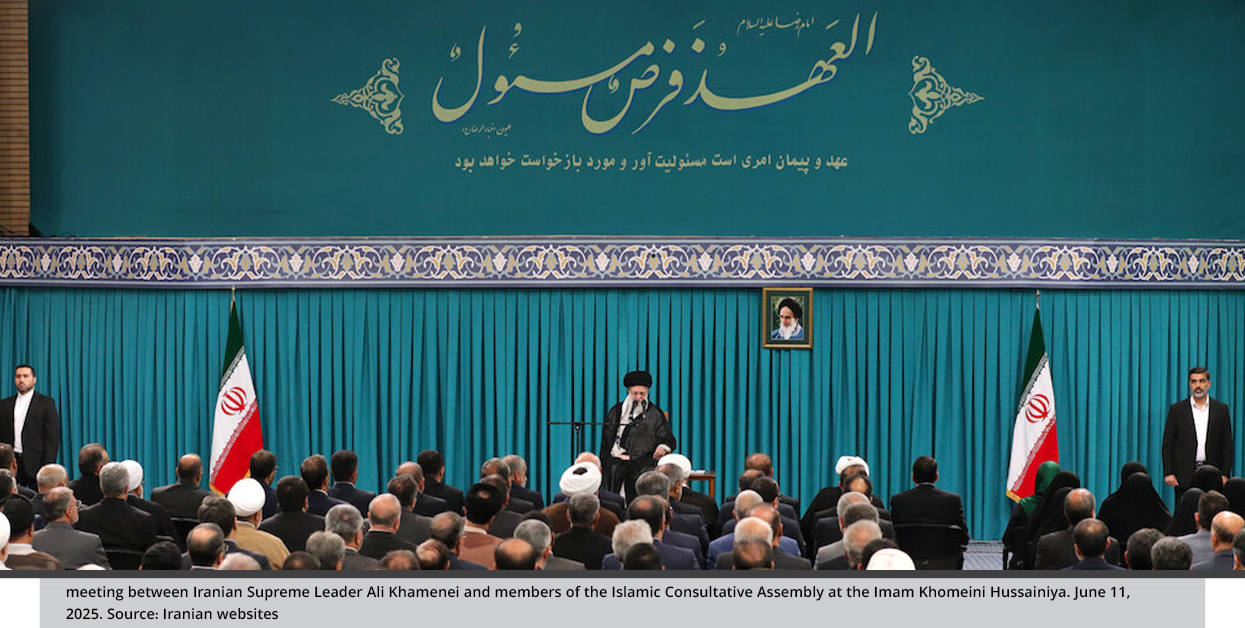
Driven by the repercussions and costs of the war on the Iranian domestic front, which could lead to an increase in the power of reformists within the state, three factors reinforce the first possibility.
1- The consequences of the war are a direct result of the revolutionary rhetoric and expansionist policies adopted by the regime and supported by conservatives. These policies have faced explicit or implicit rejection by reformist trends.
2- The current developments may strengthen the calls of reformist, social, and elite movements that have consistently advocated for redirecting the state’s priorities inward to focus on development and social justice instead of draining national resources in costly regional conflicts whose strategic toll is now clearly visible in the current Iranian landscape.
3- Israeli attacks and the assassination of several senior IRGC leaders since June 13 have weakened many of the capabilities of the IRGC, which for decades had been the source of Iran’s power and influence both domestically and abroad, including its network of proxies overseen by the Quds Force and its missile capabilities.
Driven by the regime’s ability to withstand the serious threats it has faced, three factors reinforce the second possibility.
1- The regime’s focus on post-war priorities, foremost among them the arrangements for the succession of the Supreme Leader, which have gained increasing importance amid American and Israeli threats to assassinate the current leader. This necessitates maintaining a hardline structure within the regime to ensure the selection of a successor acceptable to hardliners, religious conservatives, and the Qom Seminary, an academic and spiritual powerhouse of Shi’ism.
2- The extent of the recent security breaches may push the regime further toward a security-oriented approach, strengthening the influence of security forces throughout the state apparatus and blurring the lines between political dissidents and those cooperating with Israel. This could return the country to a phase similar to post post-revolution period marked by widespread arrests and assassinations among revolutionary leaders and government officials.
3- The regime’s fear of mass protests may prompt it to tighten its security grip and rehabilitate security forces and the Basij to fill the vacuum left by the blows sustained by the IRGC, especially in the most fragile and unstable regions of the country.
If the political system leans toward the first possibility, it will likely lead to parallel transformations on the social, economic, and foreign policy fronts. This shift may signal the practical and rhetorical end of the ideological exportation of the Islamic Revolution. The consequences of the recent confrontation have also revealed a retreat in threatening rhetoric, with a new emphasis on sovereignty, international law, and Iran’s right to self-defense—terms that reflect a shift from an offensive to a defensive posture.
Although this may be a temporary transformation, it indicates an ideological and narrative weakening of the regime, as well as a decline in its ability to persuade and influence both the domestic front and even its own inner circles, which have witnessed an unprecedented level of Israeli penetration during the war.
In this context, the country may, in the coming phase, shift from merely negotiating with the United States over sanctions relief to a higher strategic level: opening up to the West and reducing its growing reliance on an Eastern axis that has failed to provide sufficient support to Iran during the recent war. The significance of this shift becomes clear when considering its potential domestic impact, particularly in the regime’s need to ease the economic pressure caused by U.S. sanctions, as a way to contain any signs of popular unrest against the regime.
The first possibility scenario could develop further with the support of the United States and the West, possibly extending to efforts to integrate elements of the internal and external opposition into the reform process. This direction may be reinforced if the new reformist government adopts new economic policies by strengthening partnerships with the U.S. and the West, and if it pursues a new foreign policy approach toward regional states, particularly the Gulf countries, Syria, and Egypt.
The second possibility scenario carries with it significant economic repercussions, intensifies social pressures, and may trigger protests or even acts of violence and rebellion in various parts of the country. Iran has already witnessed successive waves of protests between 2009 and 2022 driven by political and ideological factors, such as the Green Movement in 2009; economic grievances, such as the fuel protests in 2019; and cultural and religious causes, as seen in the demonstrations following the death of Mahsa Amini in 2022. These events point to the existence of a fertile environment for opposition to the nature of the regime.
This environment may become even more active after the war, with protests evolving to include direct and fundamental criticism of Iran’s regional role and the IRGC’s foreign interventions, highlighting the disconnect between societal aspirations and the revolutionary state’s choices and behavior. Furthermore, the protest base could expand to include segments traditionally considered part of the regime’s support base and power structure, particularly in regions with significant social and ideological weight.
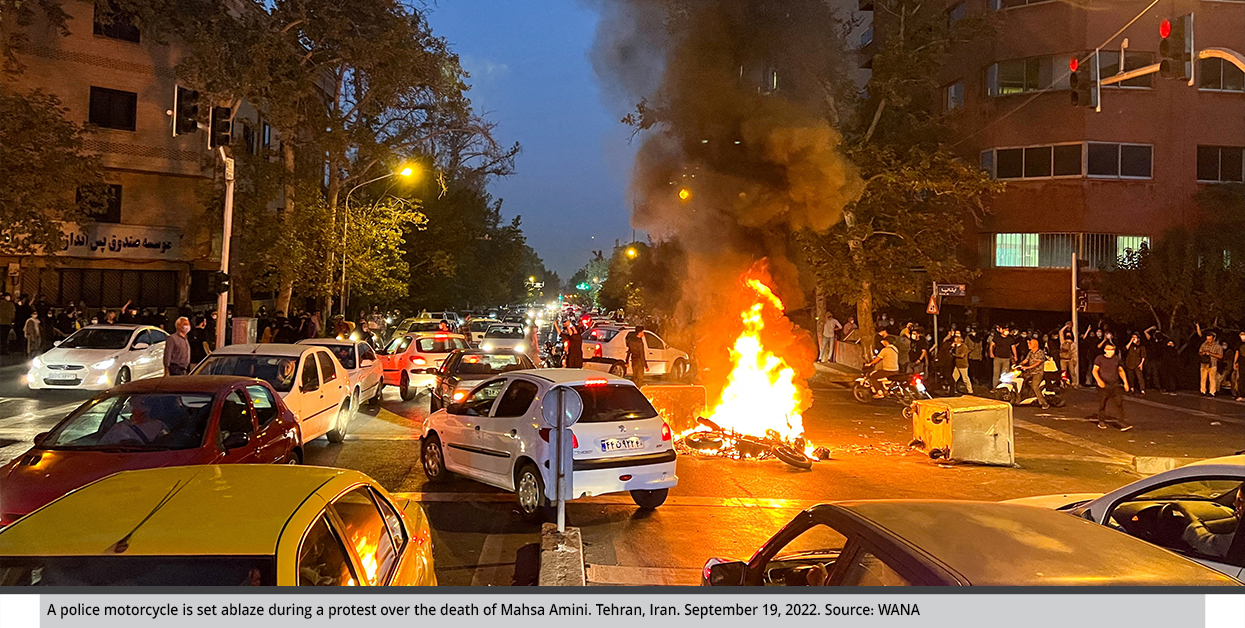
Under this scenario, the state is expected to adopt a strict security approach against any attempts at mobilization or rebellion. However, this imposes a fundamental challenge on the state: its ability to maintain security within the country. From one perspective, the capital, Tehran—especially its northern sector—was subjected to a large number of Israeli strikes. This same area witnessed the Green Movement protests and serves as the cultural and social center of the civil opposition. It is home to Tehran’s upper-middle class, academic elites, and broad segments of an open-minded civil society.
An increased reliance by the regime on security measures may provoke armed reactions against it, especially in border areas and fragile hotspots. This further complicates the internal Iranian landscape by highlighting the ethnic-sectarian factor, which is so clearly manifested in the uneven geographic distribution of minorities.
These groups are not evenly spread across the country. Rather, they are concentrated in specific areas, mostly located in peripheral and border regions—such as the Kurds in the west, the Baloch in the southeast, the Arabs in the southwest, and the Turkmen in the northeast. This distribution adds an additional dimension of vulnerability to the internal structure, given that these areas are often developmentally marginalized and experience chronic tensions with the central government, increasing their likelihood of turning into centers of protest or rebellion.
The second possibility could escalate into internal unrest that may result in the regime losing control, especially if conflicts among power centers intensify after the Supreme Leader’s death or if splits occur within the diplomatic institutions of embassies, consulates, and international representation. This could pave the way for a radical change in the regime in the medium term.
Finally, the outcomes of the recent war indicate a decline in the image of the Iranian regime, stemming from its strategic weakening and the risks of internal opposition movements. What the regime’s capabilities have endured may contribute to the beginning of a transformation in the system’s very structure. The weakening of revolutionary legitimacy and loss of external influence could lead to a gradual shift from a regional and expansionist power to a regime driven by its internal contradictions and facing unprecedented domestic challenges difficult to contain without radical solutions.
Other likely possibilities include institutional paralysis resulting from a balance of power between reformists and hardliners, with both sides agreeing to manage the crisis through compromises that serve their interests in survival. There may also be sudden developments, such as the Supreme Leader’s inability to perform his duties due to illness or old age, or the outbreak of separatist unrest in some marginalized minority regions, particularly those experiencing near-daily confrontations with the IRGC and Iranian security forces.
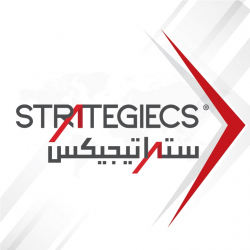
STRATEGIECS Team
Policy Analysis Team
 العربية
العربية